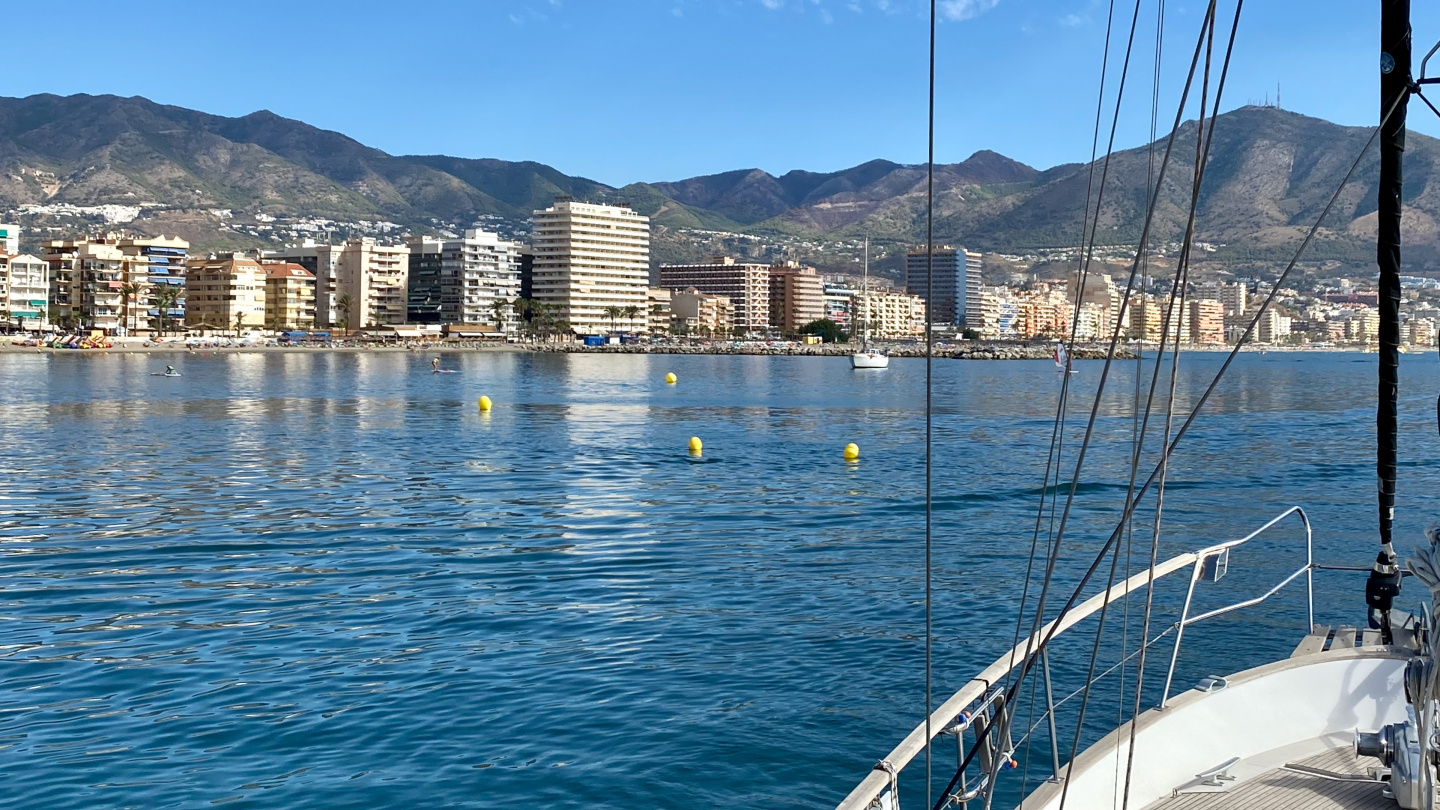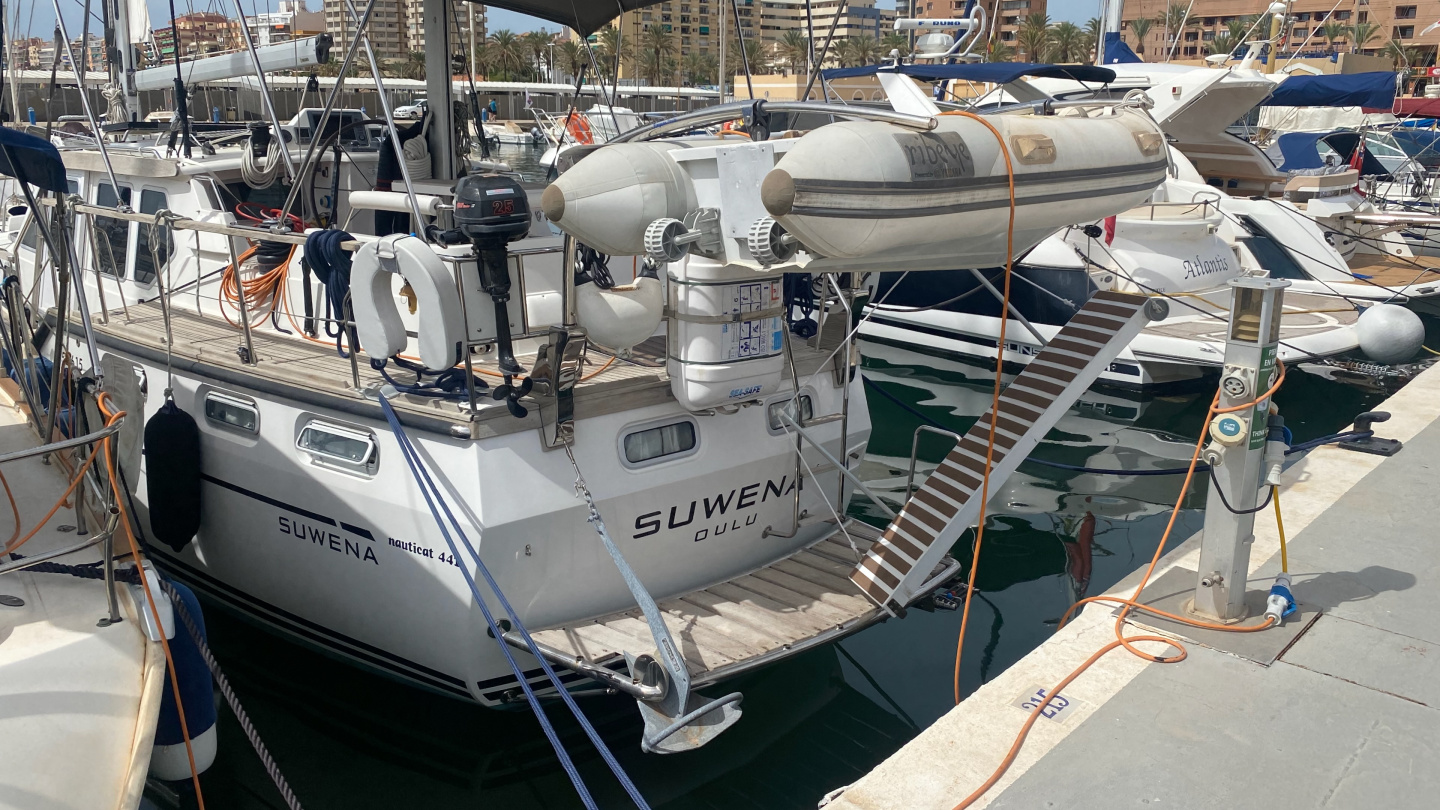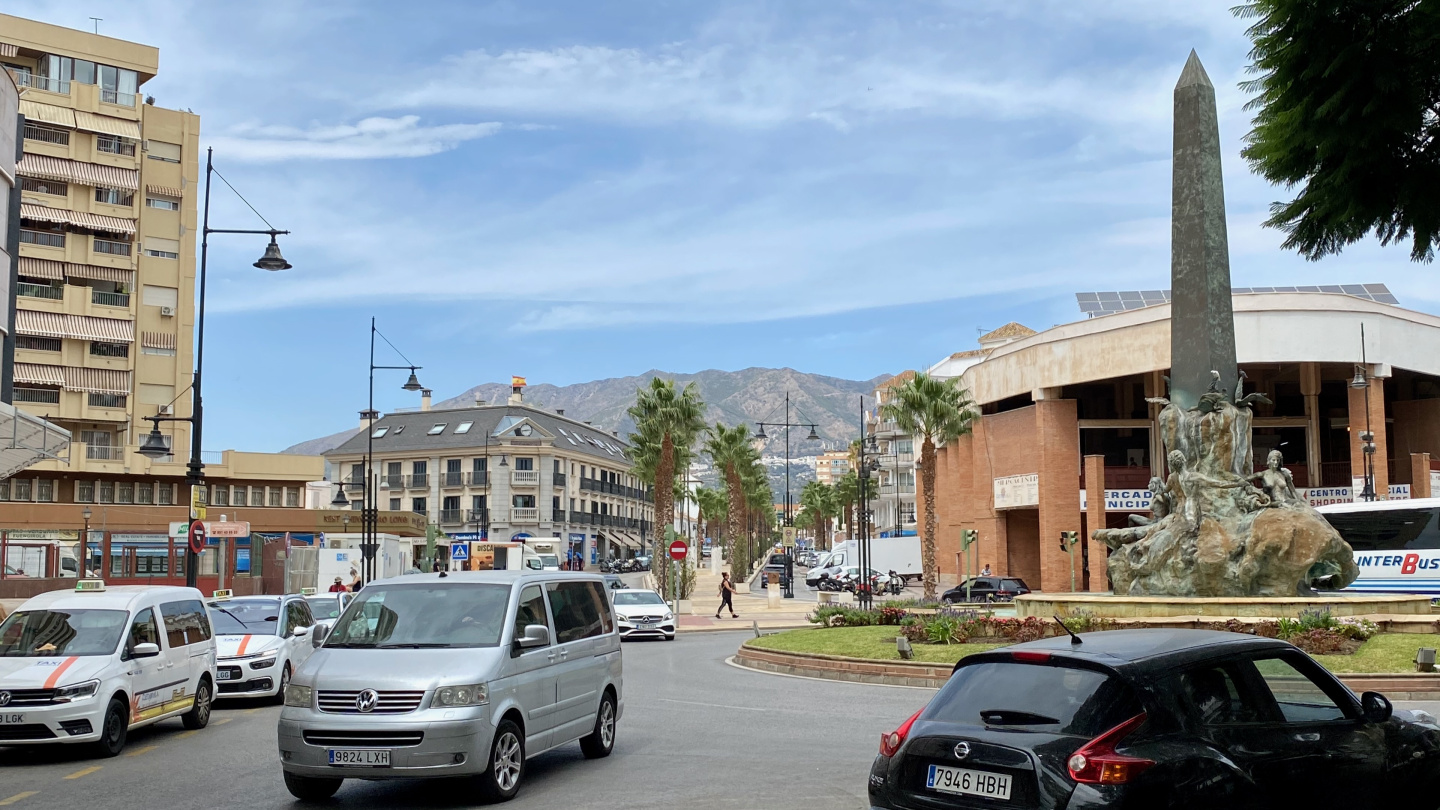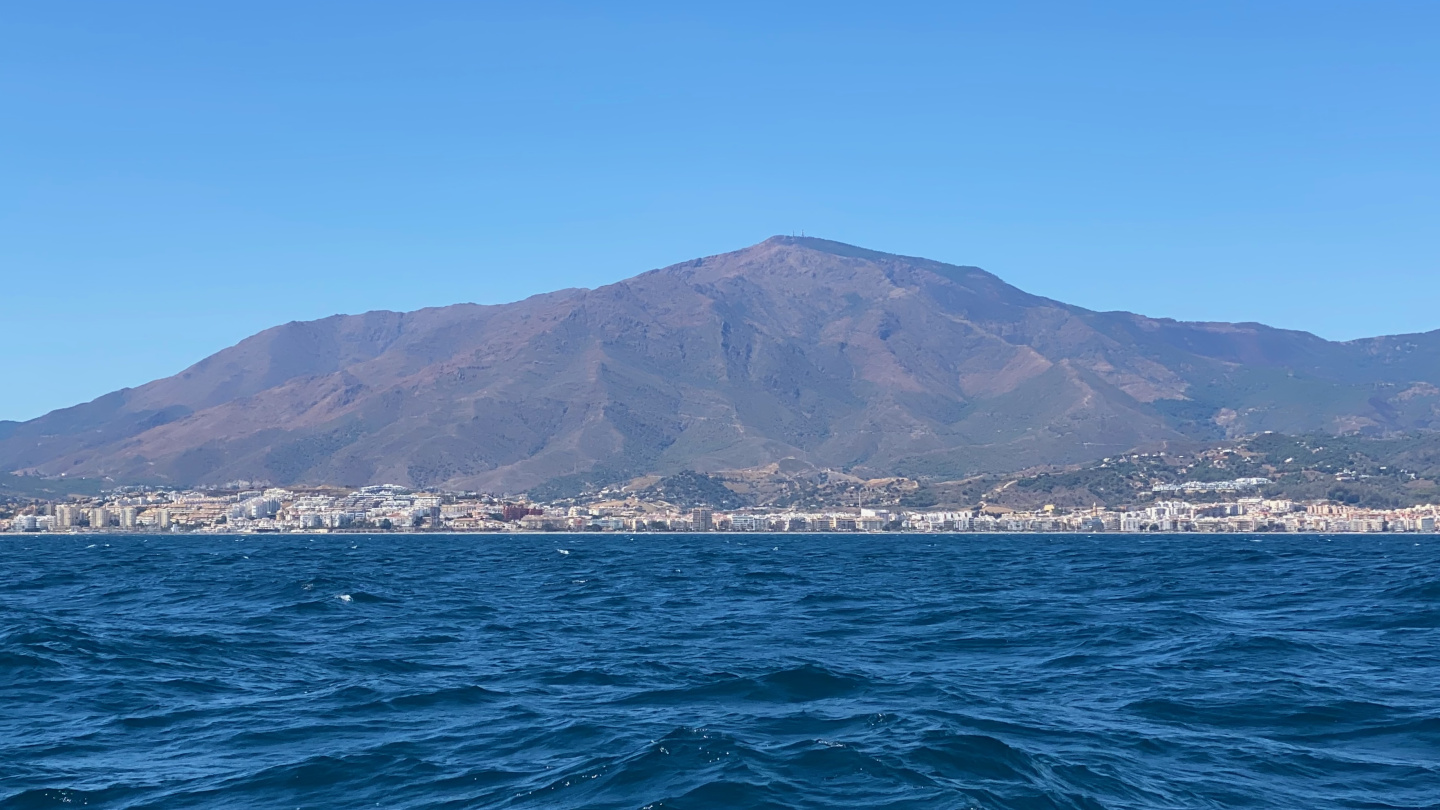From Estepona, Suwena sailed 28 nautical miles to Fuengirola. The day was foggy and windless, so we motored the entire way to Fuengirola.
In Fuengirola, there is a small anchoring area at the entrance of the harbour, which can accommodate only a few boats. Unfortunately, it was already full and there was no chance for us to fit in there.

Even though it was the end of August, and the peak holiday season was over, all the marinas along the Costa del Sol were filled with boats. For example, both marinas in Marbella were completely packed, and there was no possibility of getting a spot there. We managed to secure one of the last available spots in Fuengirola, confirming that the boating season is still in full swing.
We got a berth on the A-dock, which turned out to be also the departure dock for party boats. Every few hours, a tourist boat would speed away from our dock, filled with a group of happily tipsy tourists. The harbour is located just off the center of Fuengirola, and most of the lively nightlife in Fuengirola happens in the discos near the harbour. A long beach promenade and a multitude of restaurants ensure that you won’t go hungry in Fuengirola.

One of the most exciting moments was when, after Gibraltar, we moored in Estepona using the Mediterranean mooring technique for the first time in years. Med mooring is the most common mooring method in the Med. When we bought Suwena in 2011, the Nauticat boatyard designed a passarelle for us, including all needed blocks and ropes, so that we could go ashore in the Med. Several years passed before we had to put the plan into action. At first we had to figure out where all the passarelle parts were stored after many years. The passarelle itself had traveled south with us all these years in its own rack.
We added an extra challenge to the passarelle puzzle in England when Suwena got davits and a dinghy attached to her stern. Now, all the carefully planned tackles didn’t work because the dinghy got in the way. In Fuengirola, we had plenty of time to plan a new set of ropes to lift the passarelle off the dock when we were away.


Fortunately, it seems that marineros are always ready to meet the boat in Med mooring berths. It remains to be seen how long it will be a nerve-wracking experience for me to secure Suwena, as Andrus backs the boat into the berth, and I go to the swim platform with the stern line ready. Sometimes, marineros greet out loud, and sometimes they just nod. I need to get them talking so that I know in which direction and how far to throw the line. Also, the marinero must throw the line back to me so that I can catch it, meaning I have to make him understand without shocking him that a blind person is on the other side as a catcher. However, everything went really smoothly in Fuengirola.
When the stern lines were secured to Suwena’s aft cleats, it was Andrus’s turn to put on the protective gloves and retrieve the slimy Med mooring line from the harbour bottom and attach it to the bow cleat. It’s a disgusting amount of muck that the Med mooring line brings onto the deck, so after the basic mooring tasks, there’s now an additional job of rinsing off the mud from the deck before marina life can begin.
We had been searching in various marinas for a long time to find proper large and sturdy metal springs for Suwena. Swell is a significant challenge in Mediterranean harbours, and robust springs and thick stern lines are essential. In Fuengirola, we found a large marine equipment store that was very well stocked. Overall, it was by far the best chandlery on the Costa del Sol, and the customer service was very friendly and professional. Thus, Suwena got from Fuengirola several kilograms heavy steel springs and wrist-thick spliced custom-length stern lines. These will come in handy to prepare Suwena for the upcoming winter when we return later to La Linea, where she will spend next winter.
During our visit to Fuengirola, we spent only one day in the town itself, as our main destination was Malaga, which was conveniently accessible by commuter train.

Fuengirola offers plenty of activities and entertainment both during the day and in the nightlife, and we made an amusing observation about life on the terraces of restaurants!
How do you recognize a tourist? Tourists sit with a large beer or a big glass of wine in front of them. In contrast, Spaniards sit with a small beer “pequeña cerveza” or a small draft beer “caña”. A small beer is 2-2.5 dl, depending on the place. The advantage of a small beer is that even on a hot summer day in the south, the beer doesn’t have time to warm up at the bottom of the glass, and you can enjoy chatting with friends while sipping your drink.


